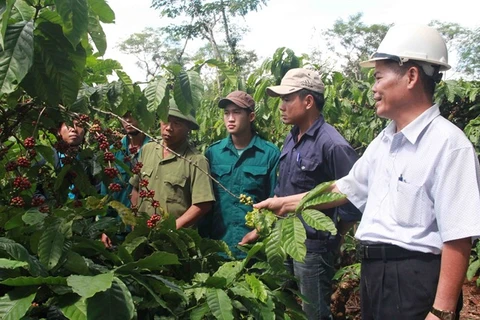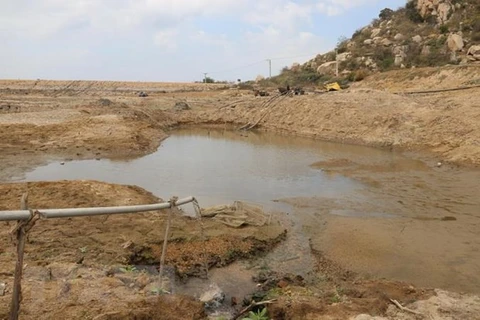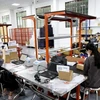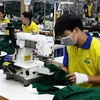Lam Dong (VNS/VNA) - The Tay Nguyen (Central Highlands) region has replaced 118,202ha of old coffee trees by planting new ones or grafting old coffee trees with young sprouts to improve yield since 2014, or 98.5 percent of the total area to be replanted in 2014-2020.
Most of replanted areas, spread over 84,165ha, have new coffee varieties with high yield and quality, according to the Ministry of Agriculture and Rural Development (MARD).
Lam Dong province has the largest replanted area in the five Central Highlands provinces, followed by Dak Lak, Dak Nong, Gia Lai, and Kon Tum.
In its Di Linh district, farmers have replaced more than 24,000ha in the last 10 years, according to the district's Agriculture and Rural Development Bureau.
The average yield from new plants in the district is 3.2 tonnes per hectare per year against an average yield in the region of 2.6 tonnes, according to MARD.
Speaking at a recent seminar in Lam Dong, Le Van Duc, deputy head of the Plant Cultivation Department, said the process of replacing old coffee trees has faced several difficulties like coffee farmers lacking incomes until the first crop in the new trees, high cost of replanting and farmers’ inability to access bank loans.
Nguyen Van Chau, deputy director of the Lam Dong Department of Agriculture and Rural Development, said the cost of replanting is 200 – 300 million VND (8,650 – 12,960 USD) per hectare and banks only provide loans of up to 80 percent of this.
“Therefore, a large number of farmers are reluctant to replace their old coffee trees.”
The country, a leading coffee exporter, has 690,000ha under the crop in 20 provinces, with Dak Lak being the largest producer.
Farmers intercrop 116,282ha of coffee in the five Central Highlands provinces and the southern provinces of Binh Phuoc and Ba Ria - Vung Tau, the seven largest producers, with other crops like pepper, avocado, durian, and cashew.
This is efficient and gives them high incomes, especially during times of low coffee prices like early this year, according to the Plant Cultivation Department.
MARD wants to replace a further 30,000 – 40,000ha of old coffee trees by 2025.
Deputy Minister of Agriculture and Rural Development Le Quoc Doanh said local and other relevant authorities should have plans to produce more quality seedlings for replacing old trees.
Besides, they should help farmers get loans to finance the replacement work, he said.
The ministry plans to keep the area under coffee at 600,000ha and ensure yields of 2.7 – 2.9 tonnes by 2025.
It has encouraged farmers to switch to other crops in areas not suitable for growing coffee./.
VNA























